Editors note: We’ve been working with Jessie Oliver on a few citizen science projects over the last year or so, and sponsored her trip to the recent Citizen Science Association conference (#CitSci2019). This month, Jessie outlines the results of her own research and has some very useful tips on project design and managing outcomes.
Our newest paper Listening to Save Wildlife: Lessons Learnt from Use of Acoustic Technology by a Species Recovery Team, demonstrates how technology design research can reveal new opportunities, barriers, and future needs for conservation technology. Having been presented at the Designing Interactive Systems Conference in June, we would like to share it with you, as well as bonus pictures, sweet serenades of bristlebirds, and more about my work with the team!
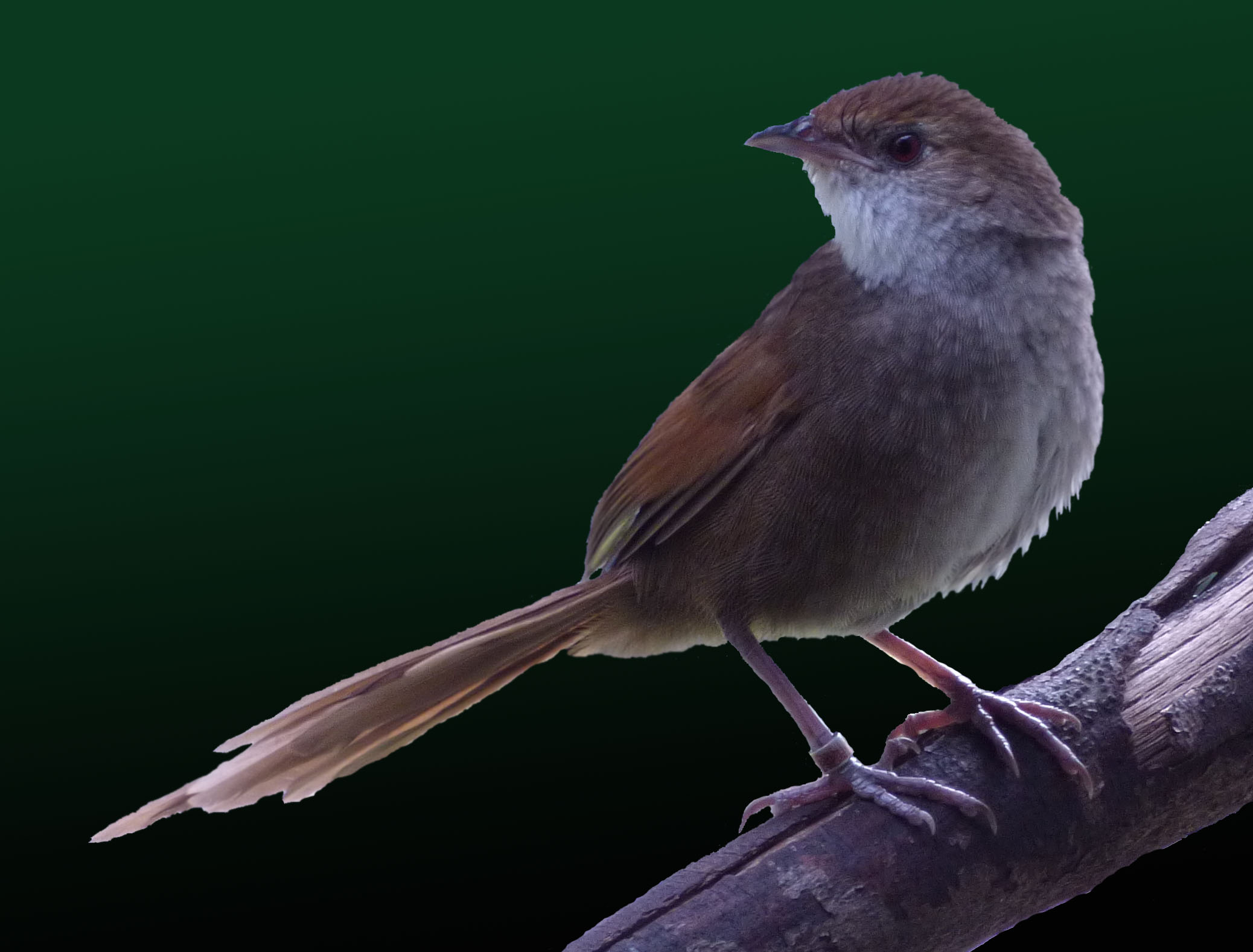
The endangered Eastern Bristlebird (Dasyornis brachypterus)
There is little doubt that plants, animals, and ecosystems are declining at an alarming rate, and conservationists are looking for technology to support their tireless work to reverse these trends. In the early days of using technologies for conservation, the tools used were often created for other purposes (e.g. military or biomedical). Recently, conservationists have taken to developing their own technical solutions, exchanging experiences, opportunities, and barriers, such as through the conservation technology network WildLabs.Net or through social media channels (also see #Tech4Wildlife and newer #Tech4Wild).
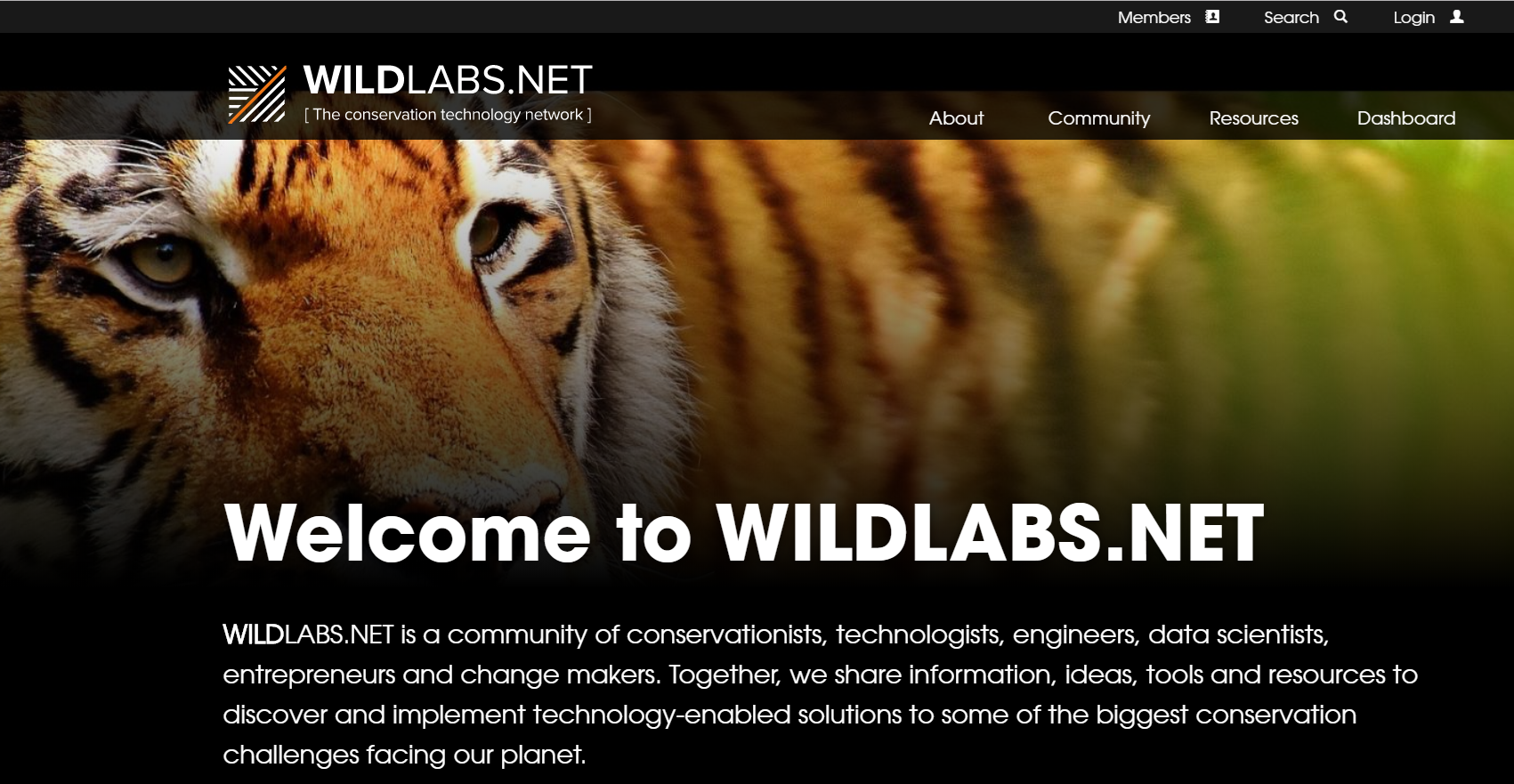
A WildLabs.Net website screenshot
With the wonderfully burgeoning development of innovative conservation technologies has come new challenges. There is now an abundance of conservation technologies on the market that people can purchase, such as acoustic sensors and camera traps. These devices allow for massive amounts of data to be collected at a low cost, with minimal disturbance to the animals. This is certainly great, but before running off to purchase these devices we need to have a solid plan for what the data should look like, and what happens to it once we have it. In advance of purchasing devices, questions such as following should be considered:
- Are people going to use any particular data and metadata standards to ensure that the data can be easily shared for broadscale use?
- What biological and technical expertise is required to analyse the data? Do the volumes of data collected require a particular technological infrastructure to manage?
- How is the data going to be used, analysed, and managed?
- How can technologies be used to support conservation beyond locating and quantifying sneaky species? Are the data useful for conservation activities beyond simply finding the target critters?
- If so, what data analysis adaptations are needed? It’s worth thinking of these types of questions well in advance.
Check out the paper to learn about the Eastern Bristlebird Recovery Team’s goals, conservation activities, invaluable knowledge, and interest in acoustics, but even beyond that the team taught me a huge amount about efforts to save bristlebirds. Visiting Currumbin Wildlife Sanctuary several times, I learned for myself just how tricky these feathered beauties are to see and photograph, even when captive! Can you spot them?

|
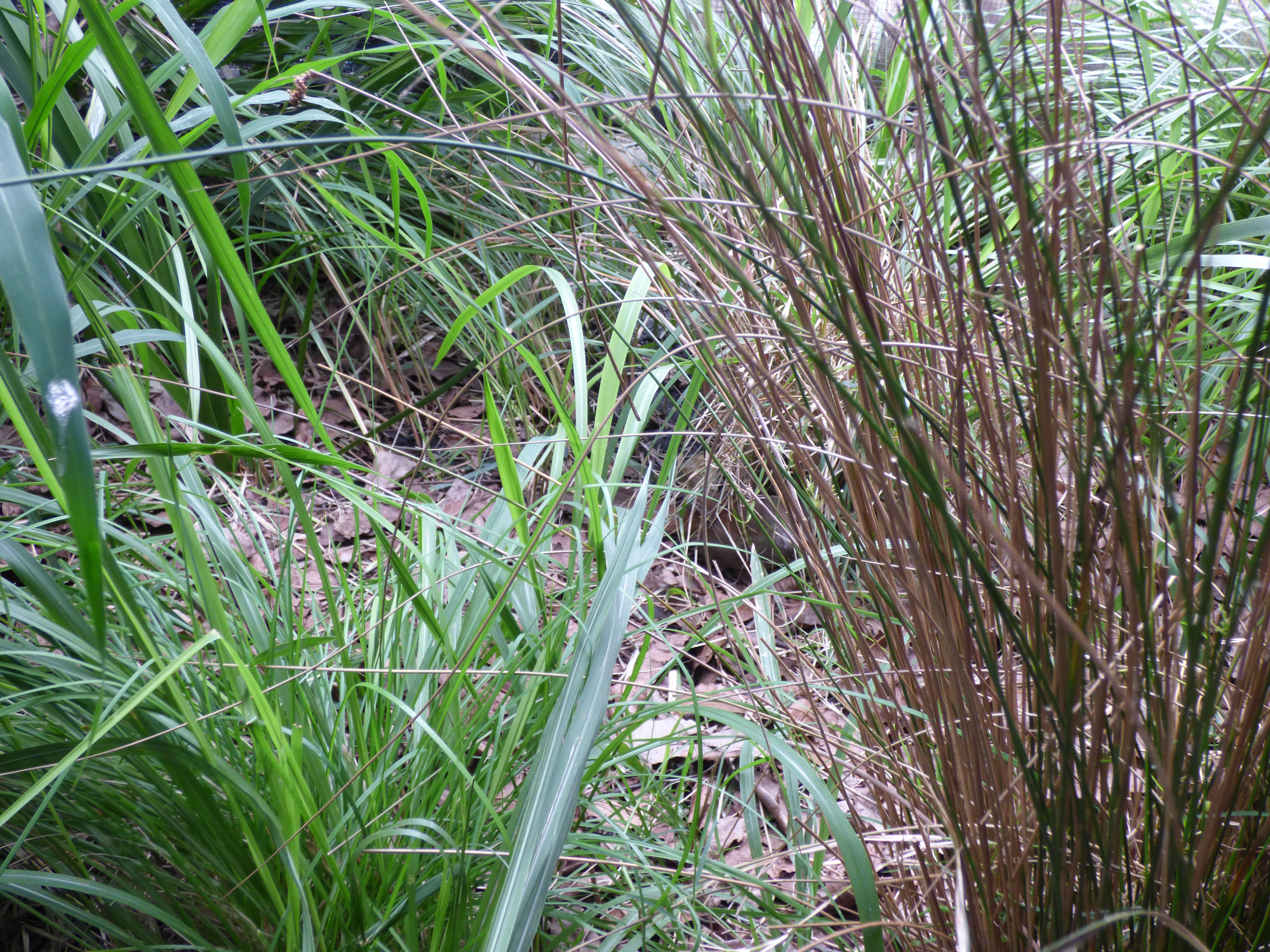
|
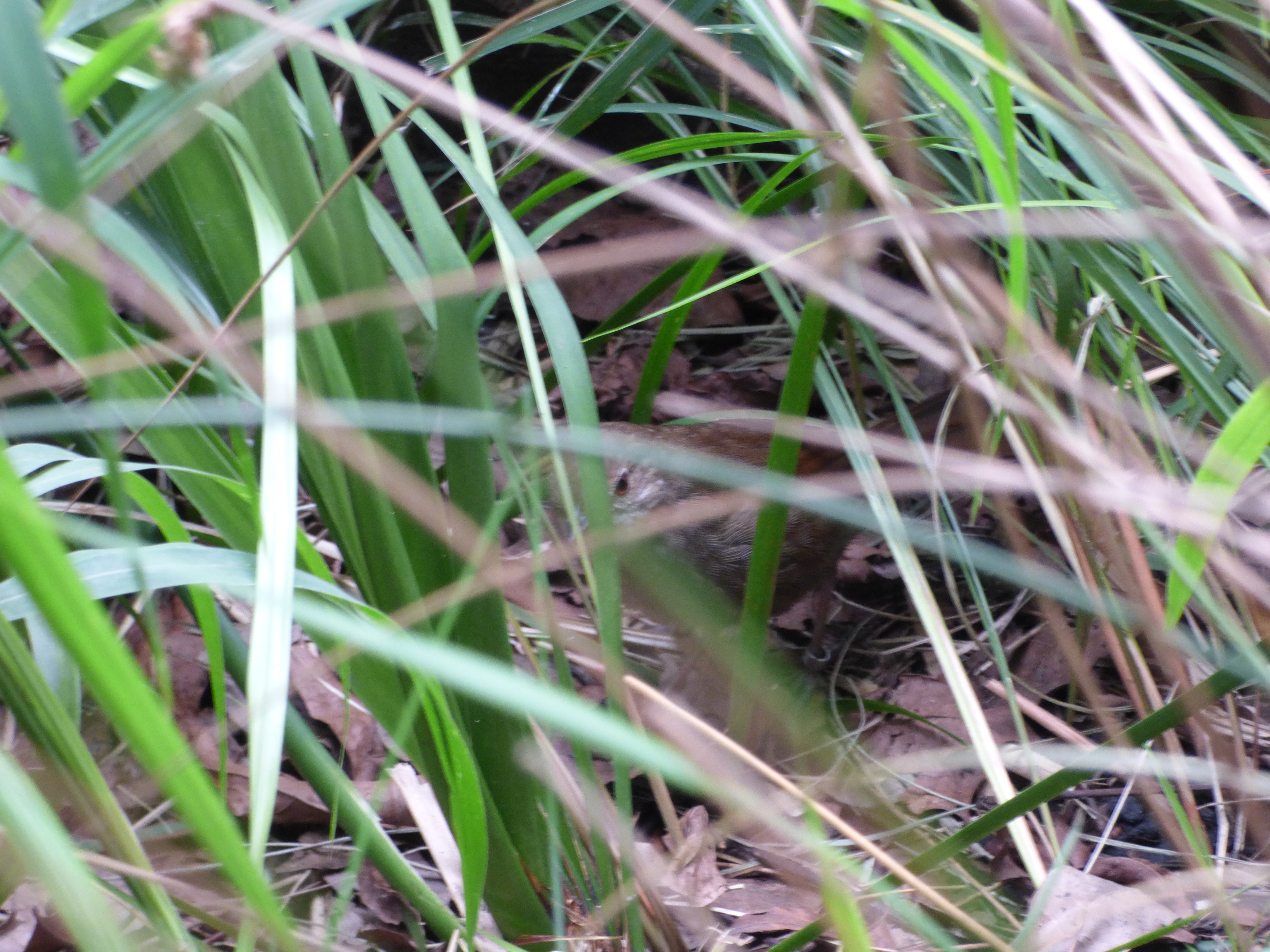
|
While visiting the aviaries I learned about nesting behaviours of bristlebirds, and worked with the team to deploy sensors where keepers thought best to capture a variety of bristlebird calls. The keeper herself shared so much invaluable information about the calls with me while we worked together, and even challenged me to identify which individuals birds were making calls! I don’t have her skills! I also had the pleasure of meeting Penny, a former New South Wales Office of Environment and Heritage dog who assisted in the surveys to find Eastern bristlebirds in their wild habitats. She is now retired, but it was absolutely amazing watching how hard and efficiently she worked, bounding through tall grass, rapidly picking up the bristlebird scent during a training!
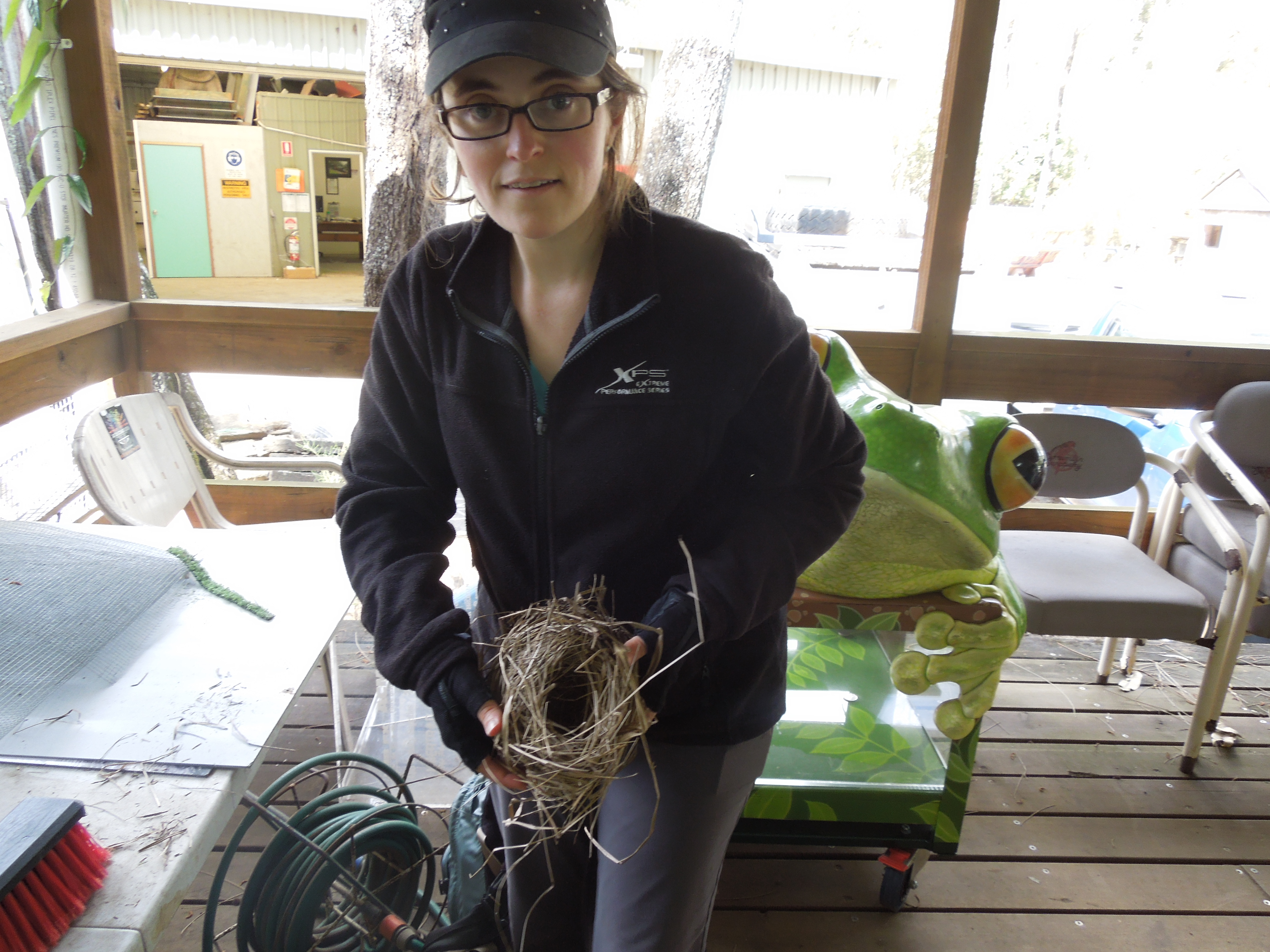
|
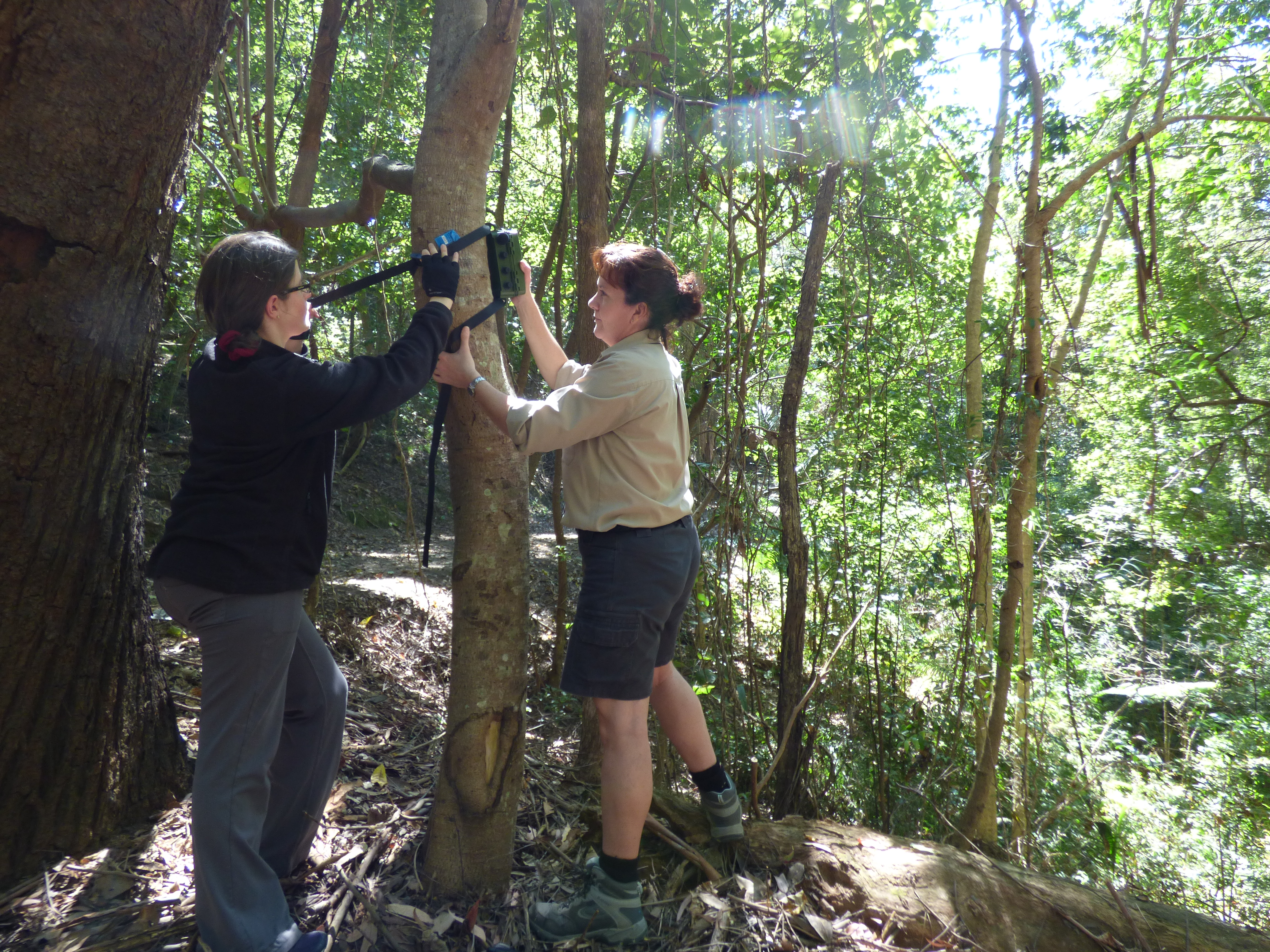
|
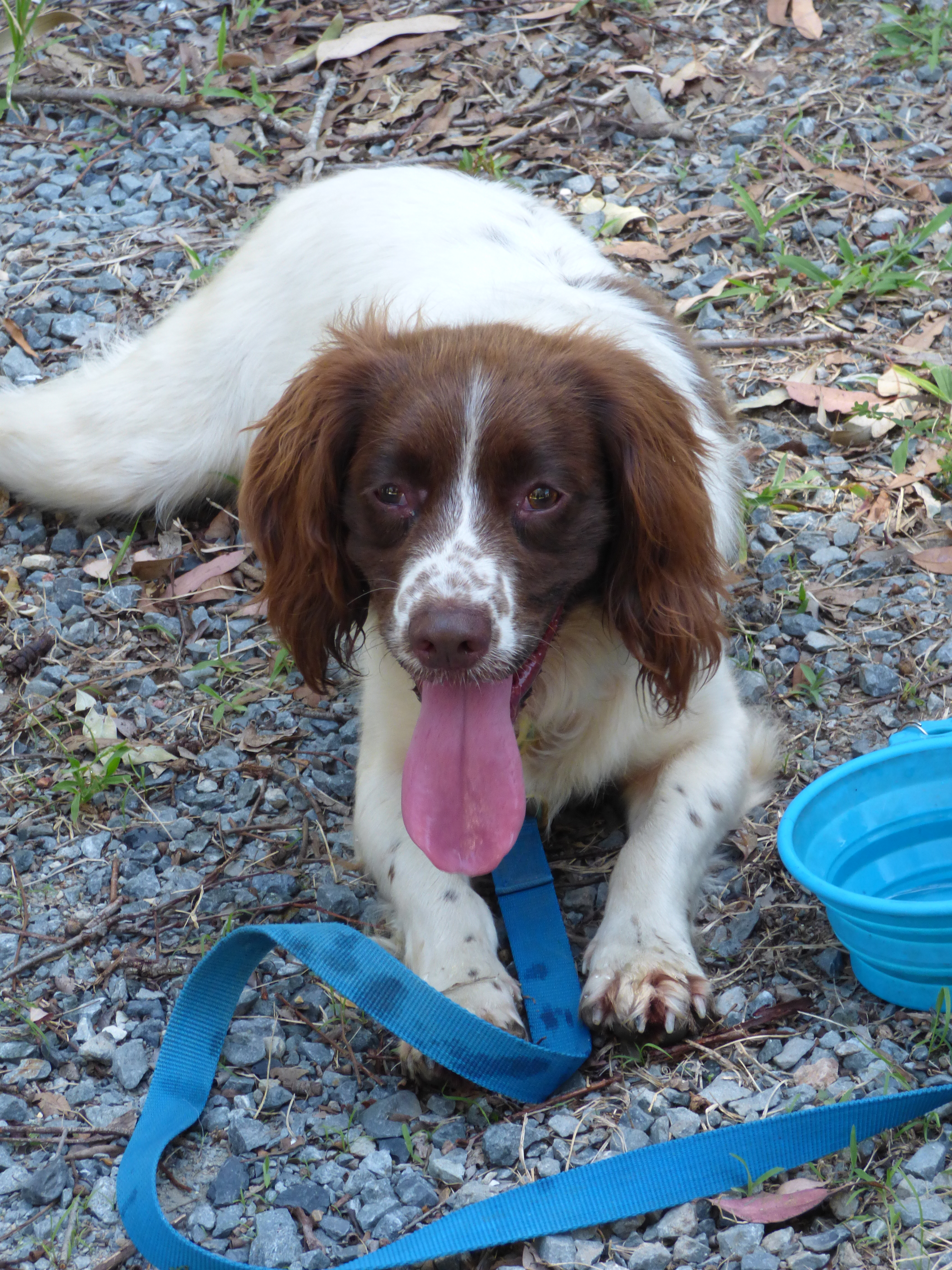
|
Once we brought the recorders back to the lab, I explored the audio data with team members playing audio of bristlebirds calling, while looking at associated visualisations of sound (i.e. spectrograms), and then discussing calls.

Call type 1
|
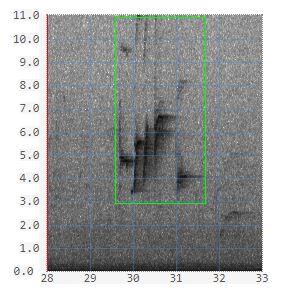
Call type 2
|
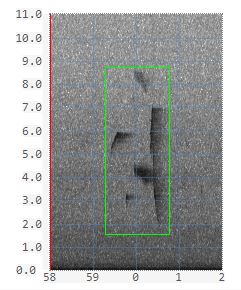
Call type 3
|
The team takes on a wide variety of tasks to combat the decline of Eastern bristlebirds, regularly evolving new techniques, and eagerly trying new technologies to improve bristlebird conservation outcomes.
From studying this team through a technology design lens, we identified 5 key aspects that warrant detailed consideration by both designers and conservationists to create innovative, impactful conservation technologies into the future.
-
Discern Goals & Motives: Understanding what is driving members of the group both individually and collectively can help share the technological infrastructure so that a variety of interests can be investigated with new
data. -
Improve Skills and Knowledge: Interested parties may lack the biological and/or technical skills required to collect and/or analyse data. It’s important to consider how technology can be designed to improve skills.
-
Facilitate Information Exchange: Technology has an important role to play in allowing people to share knowledge and exchange findings in new ways.
-
Extend Beyond the Team: Conservationists are often overburdened, and so it’s worthwhile considering what is needed for broader groups, such as citizen scientists, to participate in use of new technologies in
conservation. -
Design for Engagement, Usability, and Conservation Impact: When needing to review large quantities of data, it’s essential to design technology that is fun, usable, and produces accurate analysis to inform conservation efforts.
Technology designers have skills necessary to investigate such complex, wicked problems, and including technology design research in the conservation technology pipeline will reveal novel ways that technology could support conservation more effectively.
You can read Jessie’s complete post on the Queensland University of Technology’s Ecosounds site. You can also give us your feedback by comment below, start a chat with us via Facebook, Twitter or LinkedIn, or email directly via alex.chapman@archive.gaiaresources.com.au.

Comments are closed.